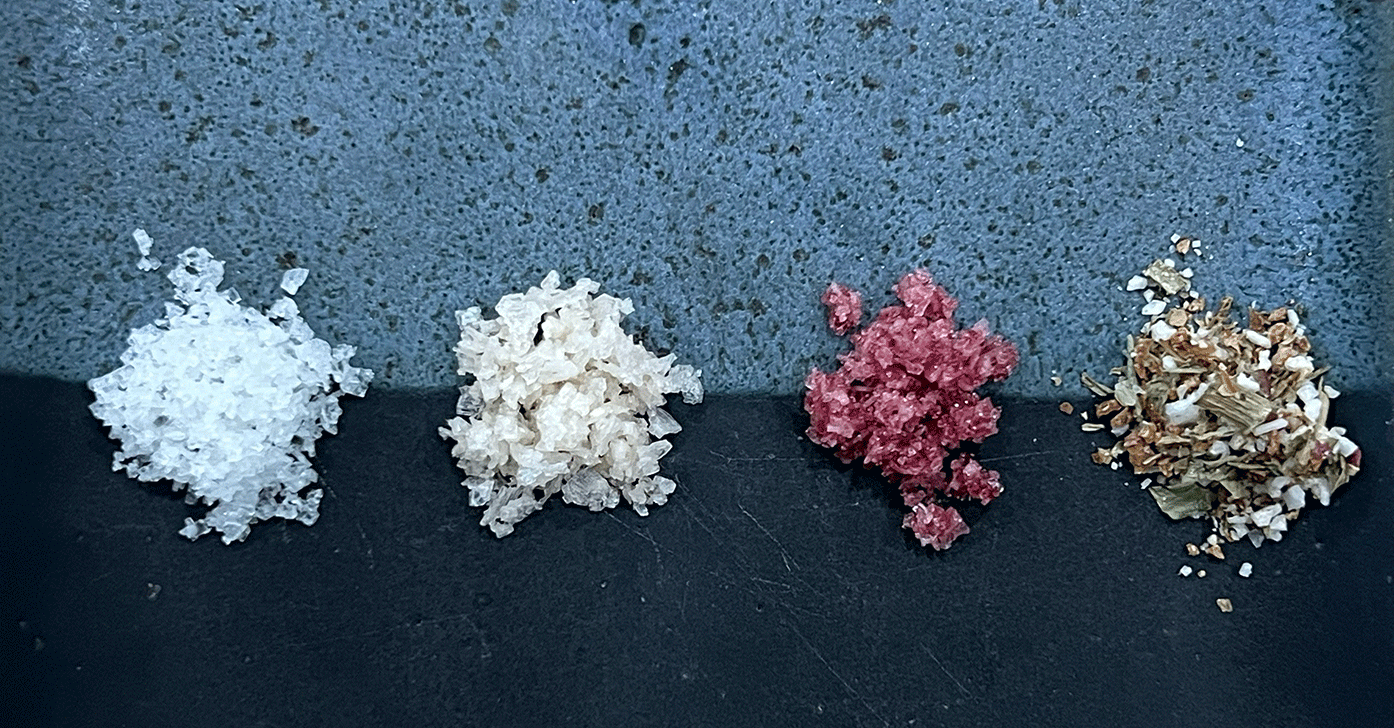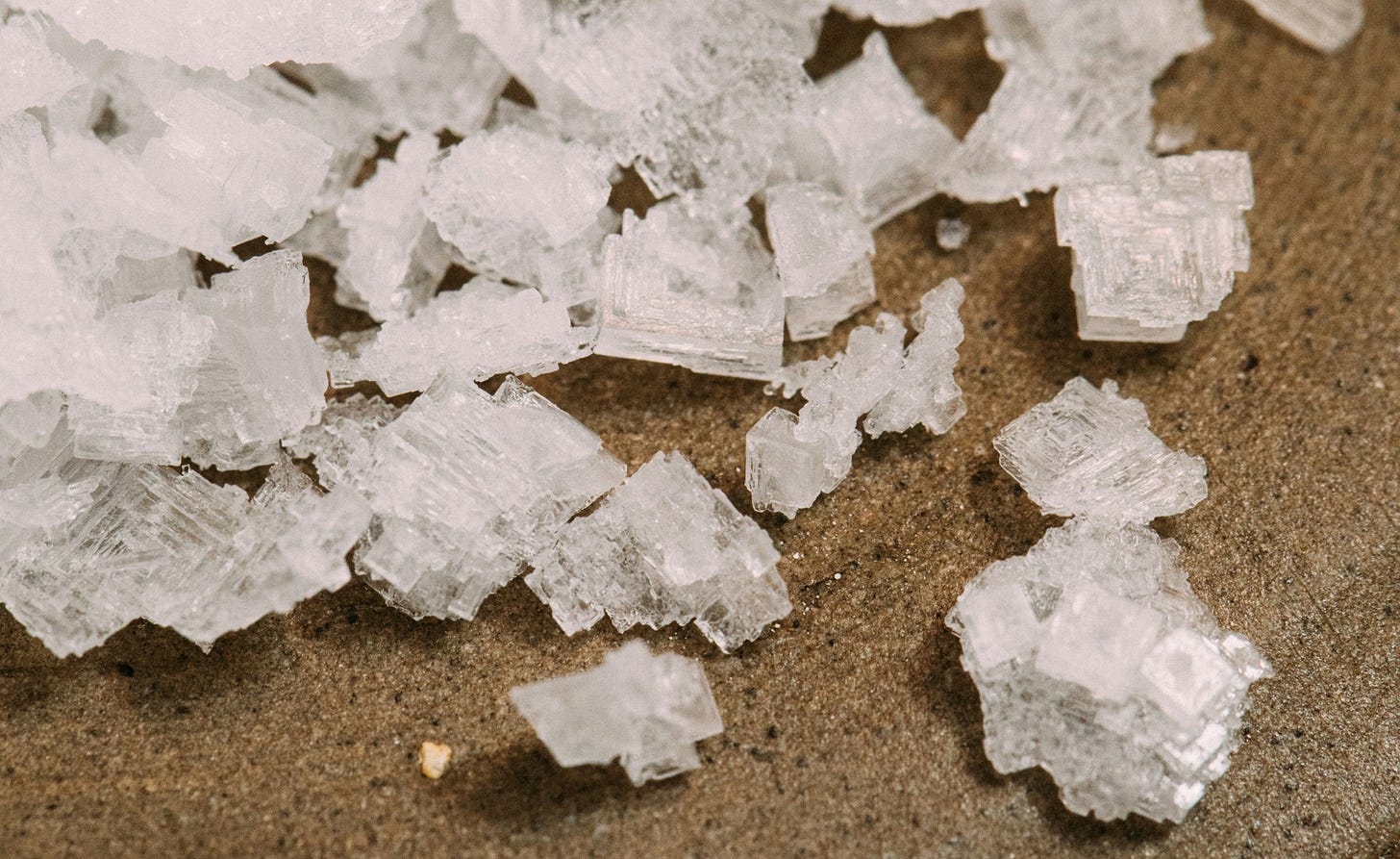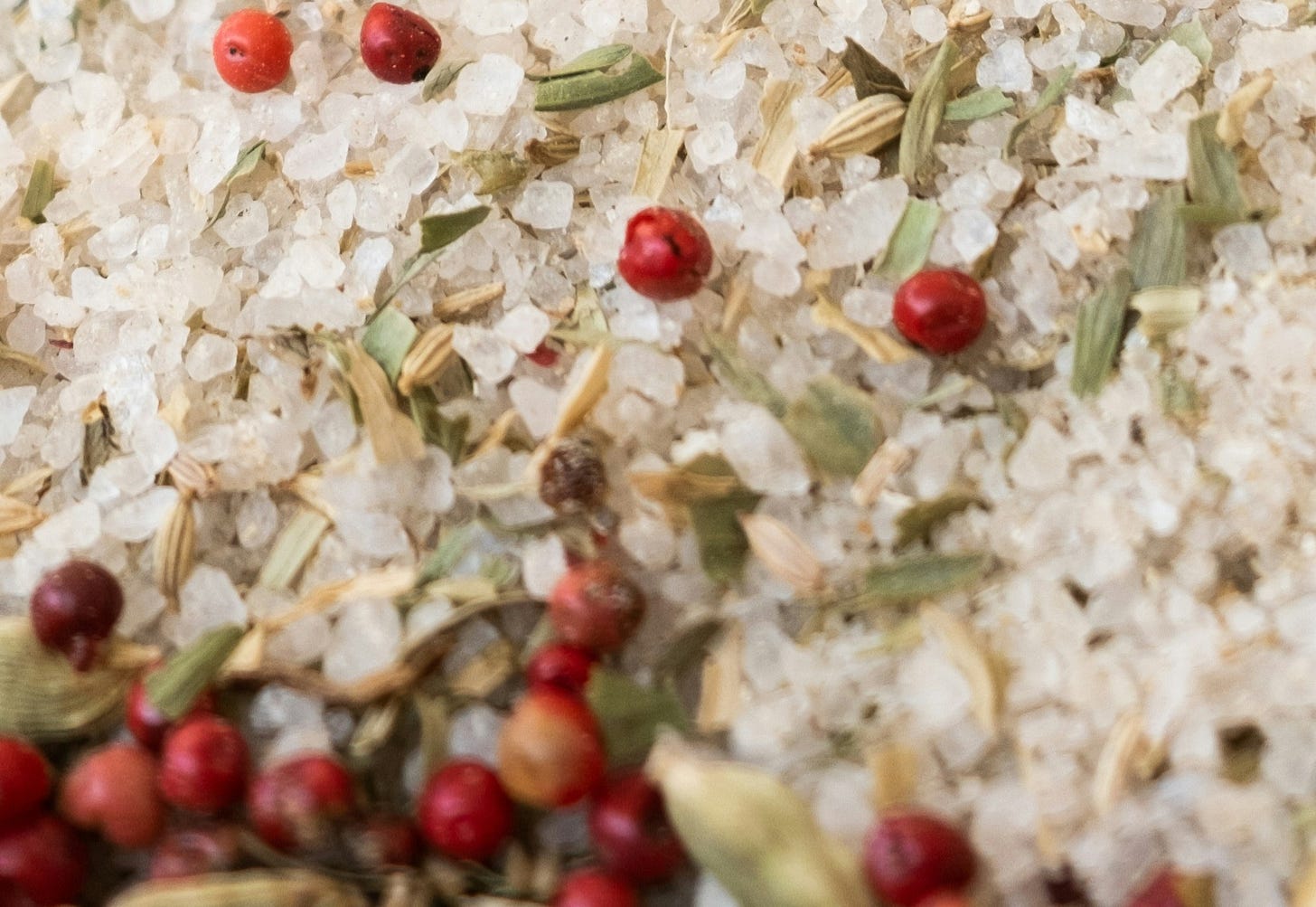After researching different ways to categorize salt, we identified a few clear themes and others that leave room for interpretation. For A Dash of… we have 4 main groups to help us organize our ideas but we’re constantly learning, and will share updates as we have them. We do not get into salts specific to beauty or keeping snow off your driveway, so for now, here’s how we categorize them…
Unrefined Salt
Unrefined salt is minimally processed and keeps its natural minerals and trace elements. This could be sea salt that is raked or sun-dried, or mined salts from lake beds or other deposits, but nothing has been added and only the H2O has been evaporated away.
Characteristics: Unrefined salts often feature a coarser texture and unique colors like pink or gray, thanks to the minerals they retain. Some even hold onto a bit of natural moisture.
Examples: Himalayan Pink Salt, Fleur de Sel, and Celtic Sea Salt
Infused Salt
Salt that has been soaked or “infused” with additional ingredients imparts a specific taste and can add both flavor and color to finish a dish. Infused and seasoned salts are similar in that they include more than just salt, but for our purposes, infused salts retain the salt by volume in a container. Until we can test all our selections, we aim for 10% or less of added ingredients to the product. We’d mostly use these to finish a dish but they can impart aroma during cooking too.
Characteristics: Infused salts come in a variety of flavors, such as fruited, spicy, or wine-soaked. Look for evenly distributed infusions throughout the salt crystals.
Examples: Truffle Salt, Lemon Salt, Wine Salt
Smoked (Subset of Infused Salt)
Smoked Salts are a subset of infused varieties but since there are so many in the category we separate them out. These salts have been smoked over wood, imparting a rich, smoky flavor to the salt crystals. Different woods, smoking times, and salt textures can completely change the flavor in this category. We prefer salts smoked with real wood—nothing beats that depth—and the woods impart different shades of color too.
Examples: Birchwood Smoked Salt, Applewood Smoked Salt, Bourbon Barrel Smoked
Uses: Often used to add a smoky flavor to foods without using a smoker or grill, such as on meats, roasted vegetables, or in rubs and marinades. We have even used Maple Wood Smoked salt on a chocolate bar.
Seasoned Salt
As mentioned above, seasoned salt takes infused versions a step further. These blends have been mixed with a variety of spices, herbs, or other flavorings to create a pre-seasoned blend. Seasoned salts are a quick way to impart multiple flavors quickly in a one-and-done option.
TIP: buy these blends in smaller amounts since they’re best enjoyed within six months for peak flavor. The aroma of the seasonings can fade over time or become sticky. When we select seasoned salts for our collection, we choose those with unique ingredients or combinations. Not just any garlic salt will do.
Examples: Garlic Salt, Cajun Salt, Mediterranean herb salt
Uses: Convenient for seasoning dishes like fries, meats, eggs, or vegetables, often used as an all-purpose seasoning.
NOTE: Infused and Seasoned salts are then subcategorized by the flavor profile and will include smoke, citrus, herbal, umami, sweet, and spice.
Each of these categories can include any of the salt shapes and sizes.
We hope you enjoy discovering more in this flavor world.






